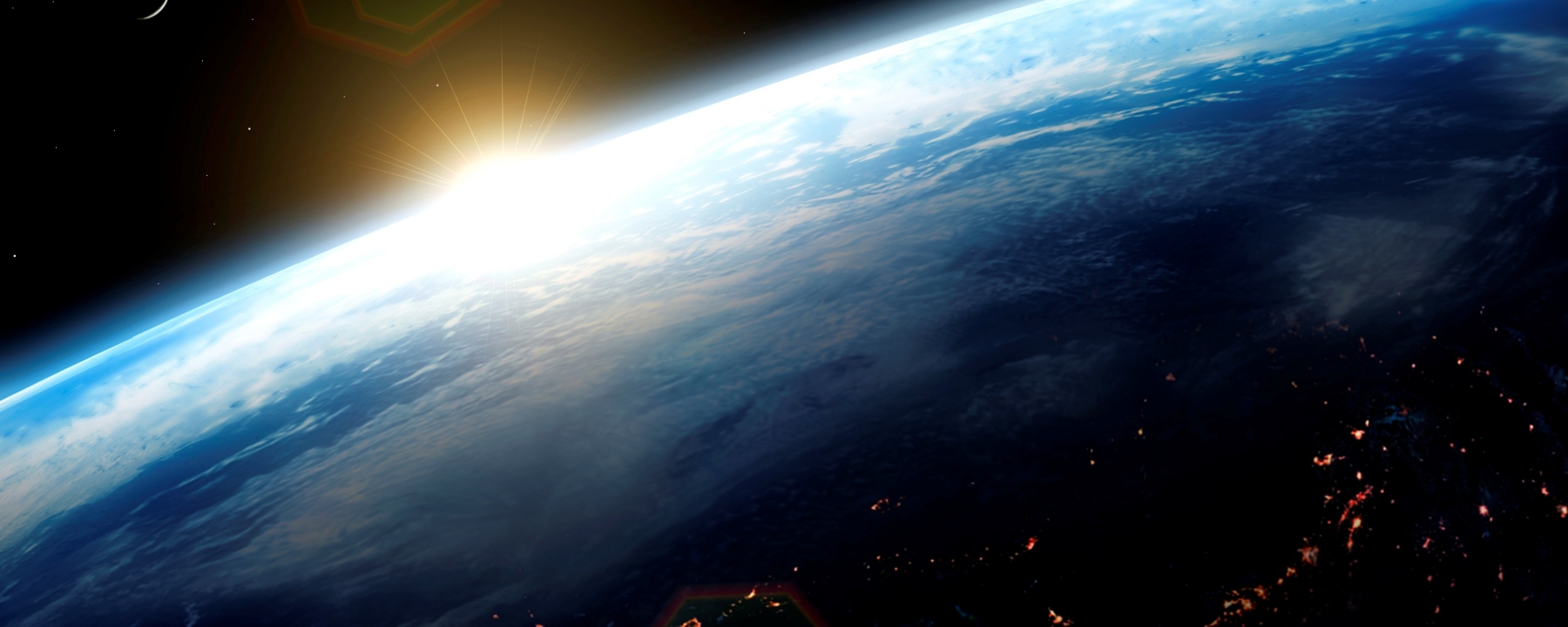
Sunlight
No sun, no life on earth
The sun is the most inhospitable and hostile place imaginable: glowing hot, deadly radiation and devouring everything that enters its realm. Nevertheless, its light is considered the source of life on earth. How does that work together?
The sun is a huge nuclear reactor in the center of our solar system. Over a billion-years, hydrogen converted to helium at the core of the sun where the temperature is an unbelievable 15 million°C. A massive amount of energy is continuously released. It flows as radiation from the surface into space, warms our planet and sets in motion many chemical and physical processes.
Without sunlight, it would be bleak on earth. There wouldn’t be any plants, animals and people. There would be no other form of life. No fossil energy sources such as coal, oil and natural gas would be available to generate energy.
The sun keeps the engine running for the water cycle: evaporation → cloud formation → precipitation. And it shapes the weather on earth by heating the earth's surface to varying degrees. Wind and hydropower plants? Solar power systems? Without sun, these wouldn’t work.
Light: brighter than a million light bulbs
Without sunlight, it would be completely dark on earth. We owe our daylight to the fact that every square meter on the sun shines brighter than a million light bulbs. Once sunlight hits the earth, it scatters in the atmosphere. We would also have to sacrifice romantic nights when the moon is full. We wouldn’t see our earth’s companion since it doesn’t shine its own light, but only reflects light from the sun. Without the sun there would be no vegetation on earth, because every plant needs light to live and grow. The sun even enables them to generate oxygen by means of photosynthesis, which humans and animals need to breathe.
Warmth: not too much and not too little
The earth’s position in the solar system is optimal for the development of life. It is exactly the right distance from the sun. It is just far enough away to keep us from burning. And we get the amount of warmth needed for humans, animals and plants to live. If the sun would go out, no life could survive on most of earth’s surface within a few weeks. Water and air would freeze over into sheets of ice.
The sun sustains all life on earth, it shines on us, warms the earth, the seas, the atmosphere, it influences the climate, it causes dry periods and ice ages, it causes wind, which blows over the earth and determines our weather. It’s storms disrupts radio communication, causes electrical discharges, and even tree rings are marked with radioactivity.-
Herbert Friedman
Die Sonne, 1997
Even in Antarctica, the coldest place on our planet, temperatures seldom drop below minus 50°C. Without the sun's radiation, the temperature would be anywhere near the absolute zero of minus 273°C. Life would have never continued nor even have come into existence.
Rain: a never-ending cycle
It’s always raining somewhere in the world. By the way, the place with the highest rainfall in the world is in Hawaii: at Mount Wai'ale'ale on the island of Kauai, it rains an average of 335 days a year with 12,000 millimeters of raindrops per square meter!
Rivers are constantly carrying rain water back to the ocean. Why doesn’t the ocean sometimes overflow? You guessed it, the sun is responsible. All the earth’s water flows in a cycle. The warm rays of the sun evaporate the water from the earth's surface, including the ocean’s water. That's why the sea level stays the same all the time. The vapor rises until there is colder air. Then tiny droplets settle on dust particles and form clouds.
If the cloud becomes too heavy or hits a mountain, the water falls as rain on the ground. Seas, rivers and lakes are replenished. The water that falls to the ground seeps into the groundwater and then flows into the rivers — or evaporates from buildings, roads and all sealed surfaces becoming a part of the water cycle again.
Wind: air in motion
In fact, wind can only exist with the sun. The sun doesn’t heat the earth evenly. Some air in the atmosphere heats up faster than other depending on the latitude. Also, there are significant temperature differences between the different layers of air.
Warm air masses act like a magnet and attract cold air. The movement of air masses give rise to winds and depending on the strength, we experience a light breeze, high winds, or a dangerous storm. Over the ocean, winds constantly blow at varying strengths, sometimes lighter sometimes stronger. This is also caused by the sun. When the sun shines, the air heats up faster over land than over the ocean. The warmer air expands and rises. Cold air flows into the empty space that has been created at the surface. This movement of air mass is what we experience as wind.
On a side note: At night, it cools down faster on land compared to the ocean. That's why the wind direction turns at night and blows towards the ocean.
With the support of BASF, Jacob Beautemps from Breaking Lab took a closer look at where the immense power of the sun actually comes from. Take a look, it's huge. (Video in German language)

